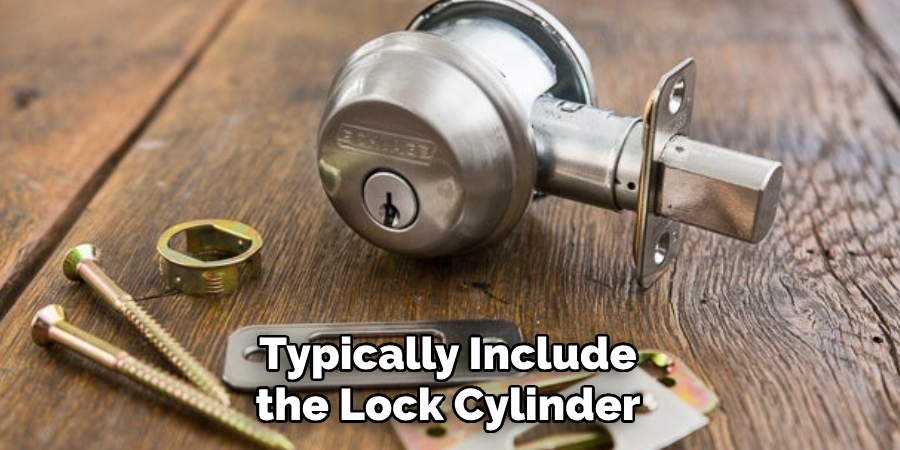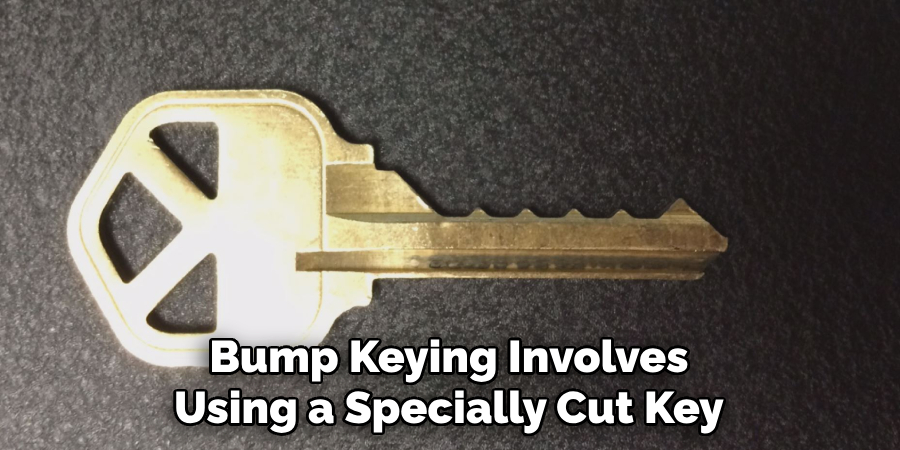While the ability to pick a Kwikset deadbolt lock may seem like a skill reserved for locksmiths or security professionals, understanding the process can be valuable for homeowners looking to improve their home security or in cases of lockout emergencies. Kwikset deadbolts are popular due to their reliability and ease of installation, but they are not impervious to picking. With the right tools and techniques, individuals can learn how to bypass these locks effectively.

However, it’s essential to emphasize that picking a lock should only be done in legal and ethical situations, such as gaining entry to one’s own property. In this guide, we’ll explore how to pick a kwikset deadbolt lock, including the tools needed, common techniques used, and precautions to take to ensure responsible and lawful use of this knowledge.
Understanding Kwikset Deadbolt Locks
Kwikset deadbolt locks are designed with security in mind, featuring unique mechanisms that offer protection against common break-in methods. They typically comprise a bolt that extends into the door frame, a key cylinder, and a locking mechanism that prevents the bolt from being retracted unless the correct key is used.
Some models incorporate advanced features such as SmartKey technology, which allows homeowners to re-key the lock without professional assistance.
Recognizing the specific type of Kwikset deadbolt and its operational principles is crucial before attempting to pick it. This understanding not only facilitates the picking process but also aids in identifying potential vulnerabilities in one’s home security setup.
Kwikset Deadbolt Lock Components and Technology
A deeper look into the components and technology of Kwikset deadbolt locks reveals why they are a trusted name in home security. The core components typically include the lock cylinder, where the key is inserted; the bolt, which extends into the door frame to secure the door; and the housing, which contains the locking mechanism.

Kwikset locks often feature advanced technologies like the BumpGuard™ to protect against lock bumping, a break-in technique that uses specially crafted keys to defeat conventional pin and tumbler locks.
Another significant innovation is the SmartKey Security™ technology. This allows homeowners to re-key their lock in seconds without disassembly or professional help, providing a quick and secure way to ensure control over who has access to their home.
The technology utilizes a unique side-locking bar, making the lock more resistant to picking and bumping. Understanding these components and how they work together is vital for anyone looking to pick a Kwikset deadbolt lock, as it requires a tactical approach to manipulate the lock’s mechanism effectively.
Features and Security Mechanisms Present in Kwikset Deadbolt Locks
Kwikset deadbolt locks are engineered with numerous features and security mechanisms crafted to safeguard homes from unauthorized entry. Notable among these is the patented SmartKey Security™ technology, designed to protect against advanced break-in techniques such as lock picking and bumping.
This innovative system allows homeowners to re-key their locks quickly, ensuring they have complete control over who has access. Additionally, Kwikset’s incorporation of BumpGuard™ technology adds another layer of protection, specifically targeting lock bumping threats.

The locks’ structure is further reinforced by a robust design, featuring a high-security deadbolt component that extends deep into the door frame for enhanced resistance to forced entry. These security features, combined with the use of advanced materials and precise engineering, make Kwikset deadbolt locks a preferred choice for homeowners prioritizing safety and security.
Legal and Ethical Considerations
Before attempting to pick a Kwikset deadbolt lock, it’s critical to understand the legal and ethical considerations involved in lock picking. Engaging in lock-picking activities without explicit permission is illegal in many jurisdictions and can lead to serious legal consequences, including fines and imprisonment. Even with lawful intentions, such as in emergency lockout situations, the act of picking locks should be approached with caution and respect for privacy and property rights.

Always ensure that you have legitimate authorization to pick a lock and that your actions are strictly for the purpose of accessing your own property or assisting someone in an emergency, with their explicit consent. Understanding and adhering to these legal and ethical guidelines is essential for responsible use of lock-picking skills and for maintaining the trust and security of the community.
Importance of Obtaining Permission Before Lock Picking
The paramount importance of obtaining permission before attempting to pick a Kwikset deadbolt lock cannot be overstated. This principle underpins the ethical framework within which lock-picking should operate, ensuring that individuals respect the boundaries of privacy and property ownership.
Prior authorization serves as a clear demarcation between responsible use of lock-picking skills for legitimate purposes, such as regaining entry into one’s own home during a lockout situation, and potentially illegal activities that infringe upon others’ security. It is a testament to the lock-picker’s integrity and commitment to upholding lawful conduct.
Furthermore, seeking permission highlights a respect for the law and an understanding of the serious implications that unauthorized lock picking may entail. This proactive approach safeguards against unintended legal consequences and preserves the trustworthiness of lock-picking knowledge as a valuable skill for security and emergency situations.
Tools and Equipment for Lock Picking

Selecting the appropriate tools and equipment is pivotal in the process of lock picking, especially for complex locks such as the Kwikset deadbolt. The basic toolkit for lock picking includes a variety of picks, tension wrenches, and sometimes, a lock picking gun. Picks are used to manipulate the pins within the lock, and they come in different shapes such as hook, rake, diamond, and ball.
Each shape is suited to a particular technique or lock type. Tension wrenches, which apply controlled pressure to turn the lock cylinder, are equally important. The correct use of a tension wrench can greatly influence the success of lock picking.
For Kwikset locks, especially those with SmartKey technology, a specialized tool known as a decoder or a bypass tool may be necessary. These tools allow the picker to exploit specific vulnerabilities or bypass the lock mechanism altogether respectfully and without damaging the lock. Additionally, practicing with a clear practice lock can be beneficial for beginners to understand the mechanics of pin tumbler locks before attempting to pick a Kwikset deadbolt.
Always remember, the use of these tools should strictly adhere to ethical guidelines and legal boundaries, ensuring they are only utilized for legitimate purposes, such as unlocking your property or helping others in emergency situations with their consent.
10 Methods How to Pick a Kwikset Deadbolt Lock
1. Single Pin Picking (SPP):
Single pin picking involves using a tension wrench to apply torque to the lock cylinder while individually lifting each pin to the shear line using a pick. This method requires patience and finesse, as each pin must be set individually to open the lock.

Single pin picking is one of the most common methods used by locksmiths and hobbyists to open locks. It requires a basic understanding of lock mechanics and patience to master the skill. SPP can be used on various types of locks such as padlocks, deadbolts, and even some high-security locks.
The first step in single pin picking is to insert the tension wrench into the bottom of the keyway, applying slight pressure in the direction the key would turn. This creates a binding force between the pins and their corresponding chambers.
2. Raking:
Raking, also known as scrubbing or rocking, involves rapidly moving a rake pick in and out of the keyway while applying slight tension with a tension wrench. The goal is to manipulate the pins to the shear line through rapid movements, allowing the lock to open quickly. This method is commonly used by locksmiths, although it requires a certain level of skill and practice to be effective.
One important aspect of raking is the use of proper tools. Rakes come in different shapes and sizes, such as short hook rakes, long shallow rakes, or double ball rakes. Each type serves a specific purpose and can be more effective for certain types of locks. Using the right rake for a specific lock can greatly increase the chances of successfully picking it.
In addition to using the correct tools, proper technique is also crucial in raking. The movements should be quick and precise, with the right amount of tension applied to the tension wrench. Too much or too little tension can hinder the effectiveness of raking.
3. Bump Keying:
Bump keying involves using a specially cut key, known as a bump key, to rapidly bump the pins inside the lock while applying torque with a tension wrench. The force from bumping the key causes the pins to momentarily jump above the shear line, allowing the lock to be opened. This technique can be learned quickly and is highly effective on many types of locks, making it a popular method for burglars.

To prevent bump keying, manufacturers have developed anti-bump pins that make it more difficult for the pins to jump above the shear line. These pins are known as security pins or mushroom pins and have a unique shape that requires specific alignment in order to open the lock. In addition, some locks come with a feature called “bump resistant” or “bump proof”, which utilizes specialized design and materials to prevent the use of bump keys.
4. Impressioning:
Impressioning involves inserting a blank key into the lock and manipulating it while applying slight pressure. As the pins bind, they leave marks on the key, which can then be filed down to create a working key for the lock. This technique requires skill and patience, but can be a useful tool for locksmiths.
Impressioning is often used in cases where the original key is lost or damaged, and there are no other options for gaining entry to the lock. It can also be used as a method of bypassing security measures, such as when attempting to gain access to restricted areas without proper authorization.
Some locksmiths also use impressioning as a way to create master keys, which can open multiple locks that are all keyed alike. This is done by using the same blank key for each lock and then filing down the marks made by each individual lock, creating a working master key.
5. Decoding:
Decoding involves using specialized tools to manipulate the internal components of the lock to determine the position of the pins. Once the pin positions are determined, a working key can be created based on this information. This process is commonly used by locksmiths to gain access to locked doors and safes, as well as by law enforcement during investigations.
In addition to physical tools, decoding can also be done through computer software programs. With the advancement of technology, decoders are now able to read electronic locks and determine the correct code or pin combination needed for access.
Decoding is not only limited to locks, but can also be applied to other security systems such as encrypted data. Through the use of algorithms and software programs, codes and ciphers can be decoded to reveal hidden information.
6. Key Overturning:
Key overturning involves inserting a key into the lock and applying slight pressure while turning it beyond its normal range of motion. This method can cause the pins to bind at the shear line, allowing the lock to be opened.

Key overturning is a common technique used by locksmiths and lock pickers, but it should only be done on locks that have been specifically designed to withstand this kind of attack. Attempting to use key overturning on a regular lock can result in damage and render the lock unusable.
7. Comb Picking:
Comb picking involves using a comb-like tool with multiple ridges to simultaneously manipulate multiple pins at once. This method can be effective for quickly opening simple locks but may not work on more complex locks with security features. Comb picks come in different sizes and shapes, allowing for versatility in picking different types of locks.
One common type of comb pick is the Bogota rake, which has a distinctive three-ridge design. This tool is especially useful for manipulating spool pins, which can be found in high-security locks. By using a sawing motion with the Bogota rake, the ridges can catch on the spool pins and manipulate them into place, allowing for a successful lock pick.
Another type of comb pick is the snake rake, which has a single, wavy ridge. This tool is useful for picking locks with standard pin configurations and can also be used to bypass security pins such as mushroom or serrated pins. The snake rake works by quickly moving through the pins and pushing them up, creating a gap for the lock to be opened.
8. Wafer Lock Picking:
Wafer locks, commonly found in car door locks and some cabinet locks, can be picked using a similar method to pin tumbler locks. However, instead of pins, wafer locks contain spring-loaded wafers that must be manipulated to the correct position to open the lock.
To pick a wafer lock, you will need a tension wrench and a pick tool. Begin by inserting the tension wrench into the bottom of the keyway and applying slight pressure in the direction that the key would turn. Then, insert your pick tool into the top of the keyway and wiggle it back and forth while also lifting upward.
9. Lever Lock Picking:
Lever locks, commonly found in older or high-security applications, can be picked using specialized tools to manipulate the levers inside the lock. This method requires a deep understanding of how lever locks work and may not be suitable for beginners.
There are several types of lever locks, but they all operate on the same basic principle. The lock contains a series of levers that interact with a bolt or latch to keep the door locked. These levers have various heights and are pushed into position by a key, which lines them up at the correct level to allow the bolt to move freely.
10. Bypassing:
In some cases, it may be possible to bypass the locking mechanism entirely without picking the lock. This can be achieved using techniques such as shimming, bypass tools, or exploiting vulnerabilities in the lock design.
Shimming involves inserting a thin piece of metal or plastic between the lock and the door frame to push back the locking mechanism, allowing the door to be opened without triggering the lock. This technique is commonly used on padlocks or other types of locks with a shackle.
Conclusion
In conclusion, it’s crucial to understand that picking a Kwikset deadbolt lock, or any lock for that matter, should only be done under legal and ethical circumstances, such as when you’re a locksmith or when you’re attempting to regain access to your own property.
The information provided in this guide is intended for educational purposes only, to help individuals understand the mechanics of locks and enhance their security awareness.
Attempting to pick a lock without proper authorization could be illegal and could result in serious consequences. Hopefully, this article gave you some helpful tips about how to pick a kwikset deadbolt lock successfully, so now that you have the proper knowledge on how to get the job done, why not give it a try today?
About
Safety Fic is a distinguished figure in the world of Diy design, with a decade of expertise creating innovative and sustainable Diy solutions. His professional focus lies in merging traditional craftsmanship with modern manufacturing techniques, fostering designs that are both practical and environmentally conscious. As the author of diy, Safety Fic delves into the art and science of Safety Fic-making, inspiring artisans and industry professionals alike.
Education RMIT University
(Melbourne, Australia) Associate Degree in Design (Safety Fic) Focus on sustainable design, industry-driven projects, and practical craftsmanship. Gained hands-on experience with traditional and digital manufacturing tools, such as CAD and CNC software.
Nottingham Trent University
(United Kingdom) Bachelor’s in diyfastly.com and Product Design (Honors) Specialized in product design with a focus on blending creativity with production techniques. Participated in industry projects, working with companies like John Lewis and Vitsoe to gain real-world insights.
Publications and Impact
In diy, Safety Fic his insights on indoor design processes, materials, and strategies for efficient production. His writing bridges the gap between artisan knowledge and modern industry needs, making it a must-read for both budding designers and seasoned professionals.
